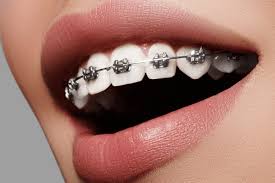Risks and Complications Associated with Dental Braces
Introduction
Dental braces, once a rite of passage for adolescents, have become a common orthodontic treatment for people of all ages seeking to correct misaligned teeth and achieve a more confident smile. While braces offer numerous benefits in terms of oral health and aesthetics, they are not without risks and potential complications. Understanding these risks is crucial for anyone considering orthodontic treatment to make an informed decision. This article explores the various risks and complications associated with the Best Dental Braces Dubai, shedding light on what patients should be aware of before committing to treatment.

Potential Risks and Complications
- Discomfort and Pain: One of the most common issues during the initial stages of wearing braces is discomfort and pain. As the braces exert pressure on the teeth to gradually shift them into proper alignment, patients may experience soreness in their gums, teeth, and jaws. This discomfort typically subsides over time but can be managed with over-the-counter pain relievers and wax applied to the brackets.
- Soft Tissue Irritation: The metal brackets and wires of traditional braces can occasionally irritate the soft tissues of the mouth, including the gums, cheeks, and lips. This irritation may cause sores or ulcers, making it uncomfortable to eat and speak. Orthodontists can provide orthodontic wax or suggest other remedies to alleviate this irritation.
- Allergic Reactions: Although rare, some patients may develop allergic reactions to the metal components of braces, particularly if they are sensitive to nickel or other metals used in orthodontic appliances. Symptoms can range from mild irritation to more severe reactions, necessitating the removal or replacement of certain components.
- Tooth Decay and Gum Disease: Proper oral hygiene becomes even more crucial when wearing braces, as food particles and plaque can easily accumulate around brackets and wires. If not removed through diligent brushing and flossing, this buildup can lead to tooth decay and gum disease. Regular dental check-ups and cleanings are essential to prevent these complications.
- Root Resorption: In some cases, the roots of the teeth may shorten due to the pressure exerted during orthodontic treatment. This condition, known as root resorption, is more common in adult patients and can lead to tooth instability if left untreated. X-rays and careful monitoring by the orthodontist can help detect and mitigate this risk.
- Temporomandibular Joint (TMJ) Issues: Improperly aligned braces or excessive pressure on the teeth can occasionally contribute to temporomandibular joint disorders (TMD). Symptoms may include jaw pain, clicking or popping sounds when opening the mouth, and difficulty chewing. Orthodontists carefully monitor jaw alignment throughout treatment to minimize this risk.
Conclusion
While dental braces are highly effective in correcting misaligned teeth and improving oral health, they are not without risks and potential complications. Patients considering orthodontic treatment should discuss these risks with their orthodontist and ensure they have a thorough understanding of what to expect during the treatment process. By maintaining good oral hygiene, attending regular dental check-ups, and following their orthodontist's advice, patients can minimize the likelihood of complications and achieve the desired results safely. Ultimately, the benefits of a straighter, healthier smile often outweigh the potential risks associated with braces, making them a valuable investment in long-term dental health and confidence.
